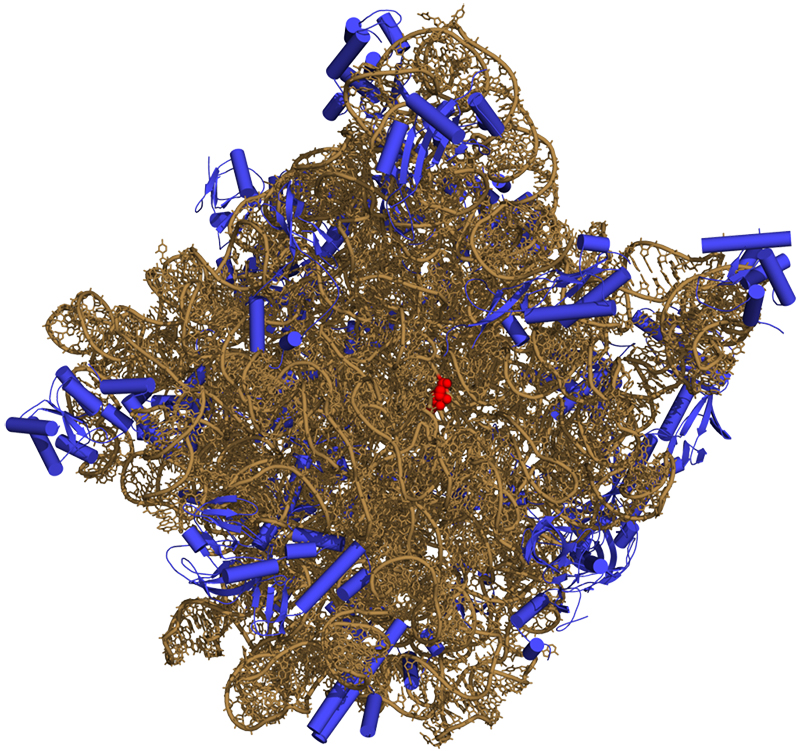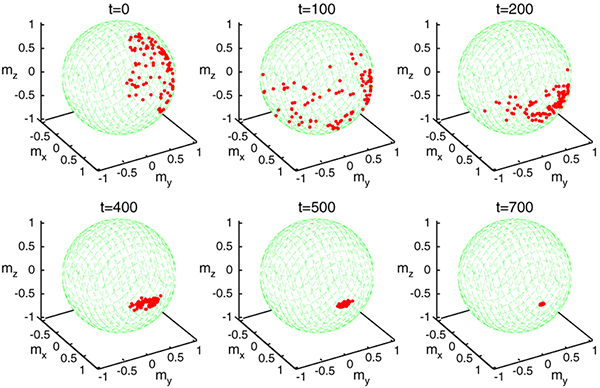News
EPJ B Highlight - Conductivity at the edges of graphene bilayers
- Details
- Published on 11 September 2019

The conductivity of dual layers of graphene greatly depends on the states of carbon atoms at their edges; a property which could have important implications for information transmissions on quantum scales.
Made from 2D sheets of carbon atoms arranged in honeycomb lattices, graphene displays a wide array of properties regarding the conduction of heat and electricity. When two layers of graphene are stacked on top of each other to form a ‘bilayer’, these properties can become even more interesting. At the edges of these bilayers, for example, atoms can sometimes exist in an exotic state of matter referred to as the ‘quantum spin Hall’ (QSH) state, depending on the nature of the interaction between their spins and their motions, referred to as their ‘spin-orbit coupling’ (SOC). While the QSH state is allowed for ‘intrinsic’ SOC, it is destroyed by ‘Rashba’ SOC. In an article recently published in EPJ B, Priyanka Sinha and Saurabh Basu from the Indian Institute of Technology Guwahati showed that these two types of SOC are responsible for variations in the ways in which graphene bilayers conduct electricity.
EPJ Plus Highlight - Science puts historical claims to the test
- Details
- Published on 06 September 2019

The latest analytical techniques available to scientists can confirm the validity of historical sources in some cases, and suggest a need for reconsideration in others
As any historian will tell you, we can rarely take the claims made by our ancestors at face value. The authenticity of many of the artefacts which shape our understanding of the past have been hotly debated for centuries, with little consensus amongst researchers. Now, many of these disputes are being resolved through scientific research, including two studies recently published in EPJ Plus. The first of these, led by Diego Armando Badillo-Sanchez at the University of Évora in Portugal, analysed an artefact named ‘Francisco Pizarro’s Banner of Arms’ – believed to have been carried by the Spanish conquistador during his conquest of the Inca Empire in the 16th century. The second team, headed by Armida Sodo at Roma Tre University in Italy, investigated a colour print of Charlemagne – the medieval ruler who united much of Western Europe – assumed to be from the 16th century.
EPJ D Highlight - Fragmenting ions and radiation sensitizers
- Details
- Published on 03 September 2019

A new study using mass spectrometry is helping piece together what happens when DNA that has been sensitized by the oncology drug 5-fluorouracil is subjected to the ionising radiation used in radiotherapy.
The anti-cancer drug 5-fluorouracil (5FU) acts as a radiosensitizer: it is rapidly taken up into the DNA of cancer cells, making the cells more sensitive to radiotherapy. However, little is known about the precise mechanism through which radiation damages cells. A team of scientists led by Peter van der Burgt at the National University of Ireland in Maynooth, Ireland have now used mass spectrometry to shed some light on this process; their work was recently published in EPJ D. A full understanding of this process could ultimately lead to new ways of protecting normal tissues from the radiation damage caused by essential cancer treatments.
EPJ E Topical review - Liquid-liquid criticality in the dielectric constant and refractive index: A perspective
- Details
- Published on 27 August 2019
The critical region in the phase diagram of condensed matter systems such as fluids or fluid mixtures is characterized by the anomalous behaviour of specific thermodynamic properties. In a new review article published in EPJE, Patricia Losada-Pérez (Department of Physics, Université Libre de Bruxelles) describes recent progress in the understanding of the behaviour of two intimately related properties, the dielectric constant ε and the refractive index n, when approaching the liquid-liquid critical point in binary liquid mixtures.
EPJ D Highlight - Enabling longer space missions
- Details
- Published on 15 August 2019

Hall thrusters, which are already used to propel spacecraft and satellites on long missions, could be used for even longer ones if models for minimising surface erosion were taken into account.
The 50th anniversary of the Apollo 11 moon landing has reignited interest in space travel. However, almost any mission beyond the moon, whether manned or unmanned, will require the spacecraft to remain fully operational for at least several years. The Hall thruster is a propulsion system that is often used by craft involved in long missions. A recent study by Andrey Shashkov and co-workers at the Moscow Institute of Physics and Technology, Russia has shown how the operating lives of these systems can be further extended; their work was recently published in EPJ D.
EPJ D Highlight - Quantum momentum
- Details
- Published on 05 August 2019

A new quantum-mechanical model has been developed that allows the momentum of quantum particles to be measured using a variant of the classical time-of-flight.
Quantum mechanics is an extraordinarily successful way of understanding the physical world at extremely small scales. Through it, a handful of rules can be used to explain the majority of experimentally observable phenomena. Occasionally, however, we come across a problem in classical mechanics that poses particular difficulties for translation into the quantum world. A new study published in EPJ D has provided some insights into one of them: momentum. The authors, theoretical physicists Fabio Di Pumpo and Matthias Freyberger from Ulm University, Germany, present an elegant mathematical model of quantum momentum that is accessible through another classical concept: time-of-flight.
EPJ B Highlight - Entropy explains RNA diffusion rates in cells
- Details
- Published on 02 August 2019

Mathematical analysis reveals that the exponential patterns in RNA diffusion rates linked to small-scale diffusive behaviours
Recent studies have revealed that within cells of both yeast and bacteria, the rates of diffusion of RNA proteins – complex molecules that convey important information throughout the cell – are distributed in characteristic exponential patterns. As it turns out, these patterns display the highest possible degree of disorder, or ‘entropy’, of all possible diffusion processes within the cell. In new research published in EPJ B, Yuichi Itto at Aichi Institute of Technology in Japan explores this behaviour further by zooming in to study local fluctuations in the diffusion rates of RNA proteins. By associating these small-scale diffusion rates with time-varying values for entropy, he finds that the rates of change of entropy in certain time intervals are larger in areas with higher RNA diffusion rates.
EPJ Data Science Highlight - Women’s disadvantage: because of who they are, or what they do?
- Details
- Published on 02 August 2019

Women often find themselves strongly disadvantaged in the field of software development, in particular when it comes to open source. In a study recently published in EPJ Data Science, Orsolya Vasarhelyi and Balazs argue that this disadvantage stems from gendered behavior rather than categorical discrimination: women are at a disadvantage because of what they do, rather than because of who they are.
Continue reading the guest post by Orsolya Vasarhelyi and Balazs Vedres on the SpringerOpen blog.
EPJ D Highlight - Chemotherapy drugs react differently to radiation while in water
- Details
- Published on 30 July 2019

A new study looked at the way certain molecules found in chemotherapy drugs react to radiation while in water, which is more similar to in the body, compared to previous research that studied them in gas
Cancer treatment often involves a combination of chemotherapy and radiotherapy. Chemotherapy uses medication to stop cancer cells reproducing, but the medication affects the entire body. Radiotherapy uses radiation to kill the cancer cells, and it is targeted to the tumour site. In a recent study, published in the journal EPJ D, researchers from the Leopold-Franzens-University Innsbruck, Austria, studied selected molecules of relevance in this context. They wanted to see how these molecules were individually affected by radiation similar to that used in radiotherapy.
EPJ B Highlight - Spinning towards robust microwave generation on the nano scale
- Details
- Published on 24 July 2019

New study explains why it is not possible to couple nano-scale microwave generators known as spin-torque oscillators together in series to generate a macroscopic strength signal
Spin-torque oscillators (STOs) are nanoscale devices that generate microwaves using changes in magnetic field direction, but those produced by any individual device are too weak for practical applications. Physicists have attempted - and, to date, consistently failed - to produce reliable microwave fields by coupling large ensembles. Michael Zaks from Humboldt University of Berlin and Arkady Pikovsky from the University of Potsdam in Germany have now shown why connecting these devices in series cannot succeed, and, at the same time, suggested other paths to explore. Their work was recently published in EPJ B.




